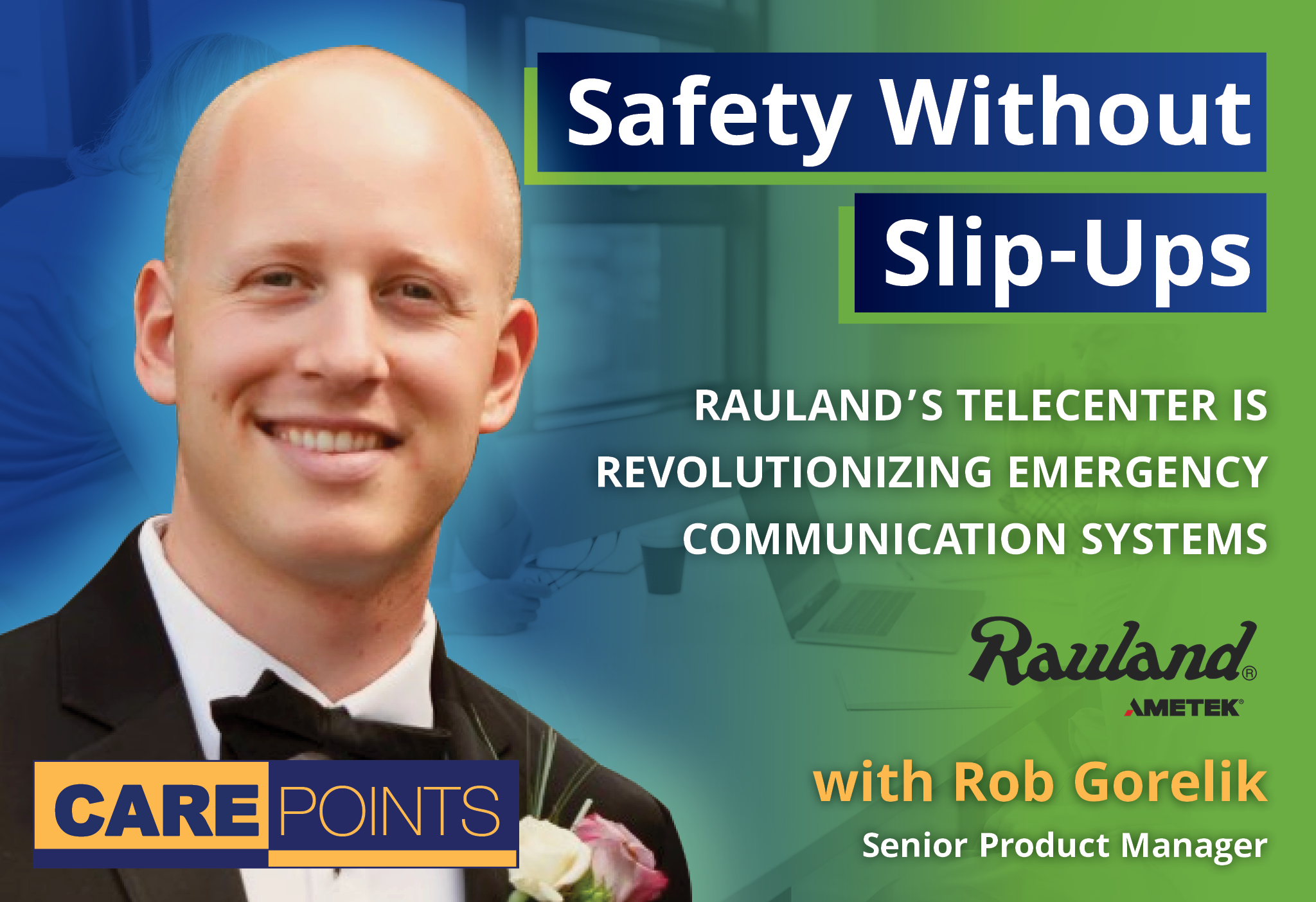
In an era of rising safety concerns in schools and hospitals, how can technology ensure no critical moment is missed?
Thanks to a longstanding relationship between Lone Star Communications and Rauland, we’re able to learn more and contribute to advancing technology that helps keep communities safer and better prepared than ever. Rob Gorelik, Senior Product Manager at Rauland, leads the development and lifecycle management of Telecenter, primarily used in schools. Gorelik also focuses on product innovation, customer application support, and strategic sales enablement.
According to Gorelik, Rauland continuously innovates, designs new solutions, and aims to be the premier brand, providing cutting-edge solutions for schools and hospitals. With technology advancing, humans must advance with it.

The Rauland and Lone Star Stellar Connection
For 80 years, Rauland has had a legacy in education, with roots dating back to the manufacturing of communication systems used in World War 2. Today, Rauland is a leader in delivering critical and advanced communications and has transitioned into school and healthcare communication systems. Lone Star’s success over its 35-year history is tied to its relationship with Rauland, both of which are now known for shaping the industry.
The connection between the two companies is especially met at the crossroads of safety, evolving technology, and application support. Rauland focuses on innovation, reliability, and deep interoperability across complex networks. In contrast, Lone Star operates as a solutions integrator, specializing in tailoring Rauland’s technologies to meet the unique needs of healthcare facilities and educational institutions.
With over three decades of experience and a large team of clinical workflow specialists, Lone Star excels in implementation, customization, and customer support, ensuring that Rauland’s systems deliver maximum impact in real-world environments.

How Telecenter is Paving the Way for Success and Safety
Telecenter is a web-based communication platform that integrates with existing school infrastructure—like intercoms, PA systems, visual messaging boards, and security systems—to deliver seamless, district-wide communication. It’s designed to unify all communication technologies into a single system, making it easier to manage both routine and emergency communications.
“It is in 90% of the largest US school districts. It helps bridge the preparedness divide, especially in the context that not every school or every time of day is the same,” said Gorelik.
Telecenter helps school districts eliminate the risk of human error when executing their safety protocols. While every district has its own emergency response plans for intruders, severe weather, and other crises, Telecenter provides customizable tools that align with each school’s specific needs.
For example, an elementary school may require a different approach than a high school, and smaller schools may operate differently than larger ones. At its core, Telecenter automates emergency procedures, offering tailored solutions and hands-on support to ensure each implementation meets the unique requirements of the school or district.
“With automation, you don’t need to worry about human errors. You don’t need to worry about that dropped walkie-talkie or the dropped microphone or, in real cases, trembling voice on the intercom,” said Gorelik. “You have clear communication throughout your building, executing on all the necessary plans that you need to know.”

Integration and Flexibility
One of the Telecenter’s standout strengths is its ability to seamlessly integrate with a school district’s existing IT infrastructure, including legacy systems, without requiring a complete overhaul. This flexibility makes it an ideal solution for districts at various stages of technological maturity. Its modular design allows schools to scale the system over time, adding new capabilities as needed to evolve.
“Schools are spending money on all this technology, and Telecenter fits kind of in the middle,” said Gorelik. “We work with these other solutions. We physically, whether through physical relays or through software, connect all these great products so that you have a unified communication platform and unified emergency response.”
Telecenter is compatible with modern communication hardware, including IP-based speakers, Power-over-Ethernet (PoE) message boards, and mobile devices, ensuring broad accessibility and ease of use. Additionally, it supports custom messaging, email and text alerts, and full facility-wide synchronization, enabling administrators to maintain consistent, real-time communication across all campuses.
“By playing in the middle, we work with other products, so schools get more out of the solutions that they’re buying for.”
Turning Complexity into Confidence
In a world where every second counts, Rauland’s Telecenter stands as a testament to what’s possible when innovation meets intention. By bridging the gap between legacy systems and modern demands, it empowers schools and healthcare facilities to act swiftly, communicate clearly, and protect confidently.
Through the collaborative strength of Rauland and Lone Star Communications, safety is no longer reactive; it’s proactive, precise, and personalized. As technology continues to evolve, so too must our commitment to the people it serves. Because at the heart of every alert, every message, and every automated response is a simple, decisive goal: to keep our communities safe, without slip-ups.
Want to see how automated school safety technology like Telecenter is transforming emergency response? Explore more insights or listen to the full episode to learn how Rauland and Lone Star Communications are shaping the future of secure, connected communities.
Robert Gorelik is a Senior Product Manager with over 11 years at Rauland, where he leads the development and lifecycle management of Telecenter — cutting-edge solutions designed to improve school safety. His work spans product innovation, customer application support, and strategic sales enablement. With a deep understanding of the K–12 landscape, Robert is committed to delivering technology that helps schools create safer, more secure learning environments.

©1991-2025 Lone Star Communications, Inc. and/or its affiliates.